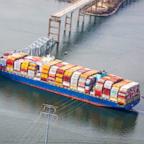Aviation Industry Struggles, Strategies Conflict
W A S H I N G T O N, Oct. 18 -- Just weeks after Congress promised the airlines a multibillion-dollar bailout, ABCNEWS has learned about part of United Airlines' plan to return to profitability.
According to a note from a company vice president, United will cut flights "until we start becoming full and then start raising the fares" on passengers.
It may not be enough. The Chicago-based company today warned the government it may have to declare bankruptcy next year if current losses continue.
"United is probably in a weaker position than their five major competitors because they've got a more heavily leveraged balance sheet and they do have a higher cost structure," says Ray Neidl, an analyst for ABN AMRO Securities, a securities firm.
United's machinists union, in the midst of labor negotiations, is skeptical.
"We don't know what kind of trickery may be perpetuated," says Tom Buffenbarger, the president of the International Association of Machinists and Aerospace Workers. "It may be perfectly legit. That's fine."
"If it is, we will deal with it," he adds. "Let us see the books."
Industry in a Slump
Overall, the industry remains in a slump.
Planes are only 62 percent full; revenues are down about 40 percent. Still, some carriers are holding their own.
Today, both Alaska Airlines and Southwest Airlines reported profits for the third quarter. And that's not counting the millions in federal bailout money. Alaska made $7.3 million; Southwest made $82.8 million.
These two airlines made money in the last quarter despite losses since the Sept. 11 attacks.
"All the way around we've got a very strong financial position, with a very low operating cost structure and a very strong appeal with customers because our fares are low," says Gary Kelly, Southwest's chief financial operator.
Airlines are now pushing the government to release a second bailout payment. So far they've received half of the $5 billion promised.




